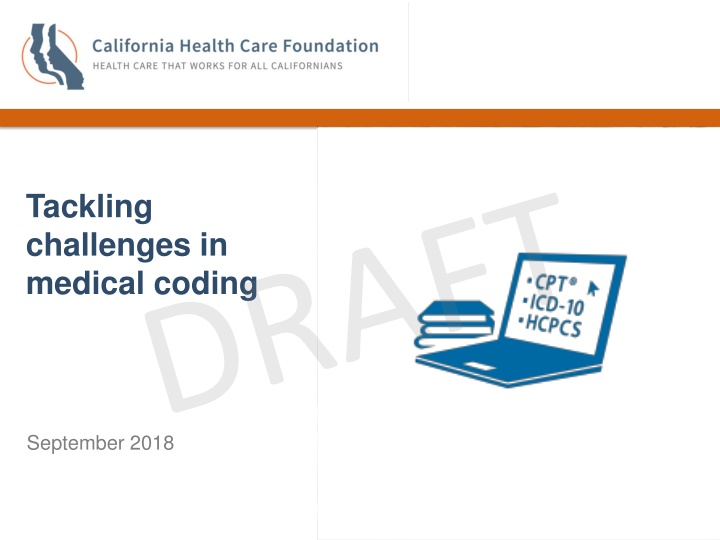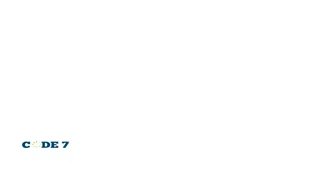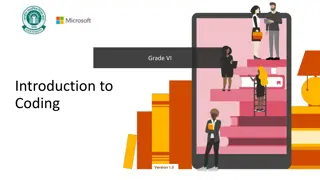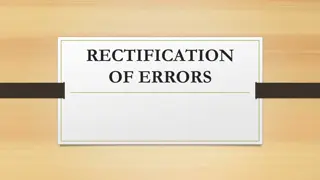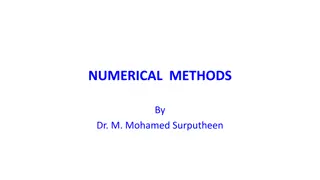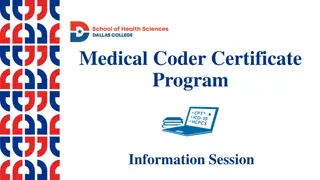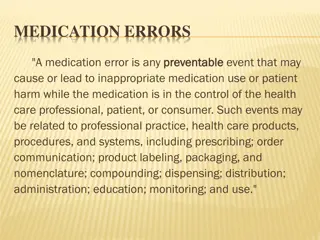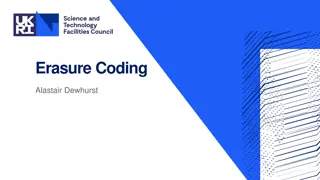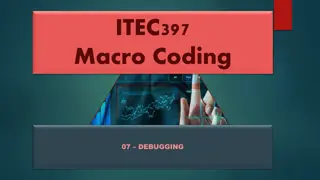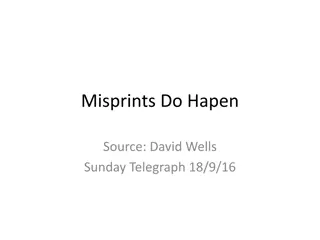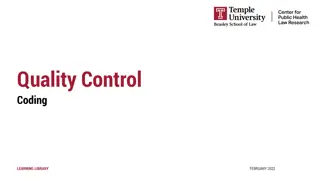Challenges in Medical Coding: A Critical Look at Errors and Solutions
Medical coding plays a crucial role in translating patient encounters into billable data, but incorrect coding poses significant challenges. Billing error rates are high, impacting providers, patients, and payers. Each step in the coding process has its issues, such as incomplete documentation and lack of knowledge. However, with the adoption of ICD-10, coding accuracy has improved. Emerging coding technologies, like those offered by companies such as Talix Artifact Health, aim to address these pain points.
Download Presentation

Please find below an Image/Link to download the presentation.
The content on the website is provided AS IS for your information and personal use only. It may not be sold, licensed, or shared on other websites without obtaining consent from the author.If you encounter any issues during the download, it is possible that the publisher has removed the file from their server.
You are allowed to download the files provided on this website for personal or commercial use, subject to the condition that they are used lawfully. All files are the property of their respective owners.
The content on the website is provided AS IS for your information and personal use only. It may not be sold, licensed, or shared on other websites without obtaining consent from the author.
E N D
Presentation Transcript
Tackling challenges in medical coding September 2018
Incorrect coding is a critical problem for all parties Medical coders play a key role in all medical practices, translating patient encounters and documentation into billable data. The job profession is projected to see a 30% increase over the next decade, according to the American Medical Billing Association Coding and billing are closely interrelated; in small practices, the role may even be performed by the same person. Billing error rates are high, and are frequently driven by incorrect coding1 Reported medical billing error rates vary from 7.1% of paid claims (found by American Medical Association in 2013) to 75-80% error rates (found by Medical Billing Advocates of America and CoPatient) In 2010, 42% of Medicare claims were incorrectly coded (including upcoding and downcoding), and 21% were found to be lacking documentation. This resulted in $6.7 billion for services that were incorrectly coded and/or lacking documentation [no data readily available on Medicaid coding error dates] Incorrect coding can result in issues for providers (claims denials, medical data collection, quality review, audits, fines), patients (delayed / poor patient care, prescription denials), and payers (incorrect reimbursements) Common evaluation metrics for coding include time (number of days from documentation to claims submission date) and accuracy (internal/external audits of documentation accuracy and completeness) 1Coding accuracy has improved since the adoption of ICD-10 classification system in 2015 (Source: Black Book, HealthIT Analytics) 2
Each step in the coding process has its respective issues Coder s direct responsibility Complete medical chart Resolve open questions Billing Assign codes Description of primary activity Provider completes patient s medical chart following an encounter [CODING INPUT] Coder reviews medical record to determine diagnoses, procedures, equipment, services performed Searches coding software or code book (as necessary) Assigns alpha-numeric code to each element [As necessary] Coder follows up with provider with questions on incomplete information or hard-to- understand medical records Billing attaches codes to insurance claims Sends to payer for processing [CODING OUTPUT] Incomplete documentation Inaccurate documentation Documentation difficult to read / understand Carelessness / rushing Insufficient knowledge of anatomy, physiology, terminology, etc. Insufficient / outdated knowledge of classification systems, regulations, insurance Lack of access to provider Inability to secure timely response from provider Billing for services not rendered, upcoding, unbundling, down- coding, duplicate coding Insufficient documentation to substantiate claims Incorrect general information Pitfalls of primary actor 3
Coding technologies can help ease pain points1 Coder s direct responsibility Complete medical chart Resolve open questions Billing Assign codes Leading IF company -- Talix Artifact Health -- Funding -- ~$18.5M from Stella Health and Healthline Partnership with Johns Hopkins -- Customers -- Medicare Advantage, ACA Commercial and Medicare ACO 65+ hospital systems, including Johns Hopkins -- NLP / ML-based data analytics software to uncover missed codes and documentation gaps 15-20% Risk Adj Factor accuracy improvement 19x ROI increase Partnership with Nuance; integrates into multiple EHRs Mobile app platform that streamlines physician query process Response rates 95%+ Response times < 48 hours Description -- -- Health Fidelity (already serves Medicaid) Apixio (Series D - II) ChartWise Public companies offer full suites of coding solutions: Streamline Health (Physician Query) Nuance2 (Clintegrity / Physician Query) Tracking Competitors -- -- 1Other common coding solutions: 1) Outsource to human coders: M*Modal, Optum360, athenahealth, Aviacode, Precyse nThrive; 2) Computer-Assisted Coding (CAC) software: EMScribe, Pulse8, Flash Code, Fusion CAC (Dolbey) 2Nuance rated top vendor for end-to-end coding and CDI in survey of 3000 orgs (Source: Black Book, HealthIT Analytics) 4
Discussion questions Is the coding overview and its overarching challenges consistent with your experience? Which point in the process is the greatest problem for you, at present? How have you tried to address the problem thus far? Would you be interested in learning more about any of these technology solutions? 5
